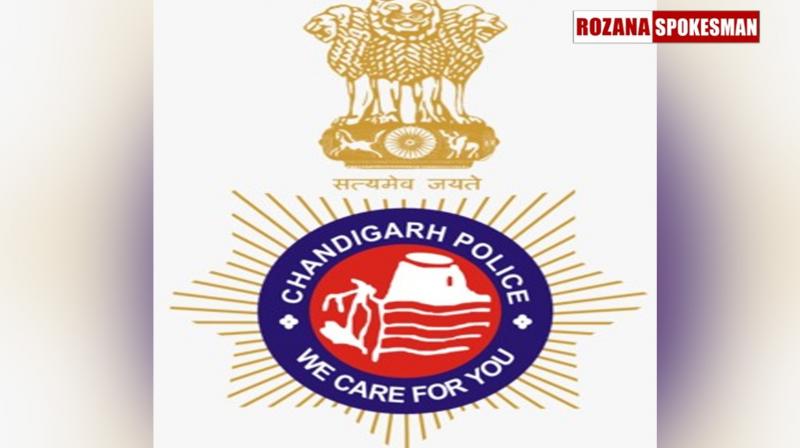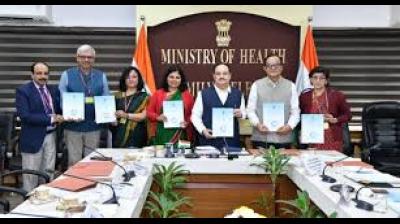
QR code-based forensic tracking introduced for tamper-proof chain of custody.
One Year of New Criminal Laws: Chandigarh Police Highlights Transformative Impact
On the completion of one year since the implementation of the new criminal laws—Bharatiya Nyaya Sanhita (BNS), Bharatiya Nagarik Suraksha Sanhita (BNSS), and Bharatiya Sakshya Adhiniyam (BSA)—the Chandigarh Police on Monday highlighted the "transformative impact" these reforms have had on the criminal justice system, along with key achievements.
In a statement, Chandigarh Police said it had swiftly adapted to the legislative reforms through structured training, technology upgrades, and enhanced inter-agency coordination to ensure smooth implementation.
Chandigarh became the first State/UT to fully implement all three new criminal laws, which came into effect on July 1, 2024. These laws are said to have modernized the legal framework, enhanced citizen participation, ensured timely justice, and strengthened internal policing systems.
Key Achievements (July 1, 2024 – June 30, 2025):
1. Capacity Building and Training
Over 6,124 police personnel, including Gazetted Officers (GOs), Station House Officers (SHOs), and Investigating Officers, were trained in the provisions and practical applications of the new criminal laws. A total of 29 Master Trainers successfully completed the Training of Trainers (ToT) course. Additionally, all SHOs, IOs, and computer operators received hands-on training in the use of new technology applications.
Police officials with technical backgrounds underwent specialized capacity-building programs, while personnel were also onboarded onto the iGOT Karmayogi Portal to facilitate continuous learning and refresher training.
To strengthen technical support, 14 forensic experts were hired through the National Forensic Sciences University (NFSU) and 22 IT specialists were brought in through NICSI.
Specialized training modules focusing on evidence handling, digital documentation, and victim-centric procedures were conducted to enhance operational efficiency. Additionally, the Chandigarh Police collaborated with judicial academies, law schools, and prosecution departments to promote cross-functional understanding and coordination within the criminal justice system.
2. Tech-Enabled Investigation
Integrated ICJS (Integrated Criminal Justice System) with CCTNS (Crime and Criminal Tracking Network & Systems).
Video conferencing rooms set up, with 36 VC studios in Model Jail linked to 32 courts.
Bandwidth increased to 50 Mbps, to be upgraded to 100 Mbps.
Adoption of advanced apps like Nyay Setu, eSakshya, Nyay Shruti, eSummon, MedLEaPR, eProsecution, NAFIS, Chitrakhoji, etc.
Use of eSakshya for videography and photography of search and seizure cases—synced with FIRs. Evidence is stored securely with HASH values and geo-tagging.
Total eSakshya entries so far: 2,675
CCTNS Khoji uses AI for analyzing suspect records, with: Advanced search capabilities, Geo-tagging and GIS-based crime mapping, Fingerprint and facial recognition linked with national databases
eProsecution is now fully operational: Final reports/charge sheets are submitted to prosecution digitally.
1,513 charge sheets sent through eProsecution.
3. Efficient Investigation & Prosecution
3,154 FIRs registered under new laws (including 1,459 e-FIRs) as of June 29, 2025.
758 charge sheets filed.
71 convictions out of 78 decided cases — 91.1% conviction rate.
Average time to conviction reduced from 300 days to 110 days under the new laws.
11,327 online medical requests registered via MedLEaPR.
4. Enhancement of Forensic Capabilities
5 CFSL teams and one standby team offer 24x7 services for cases with imprisonment over 7 years.
14 forensic analysts hired via NFSU, Gandhinagar.
QR code-based forensic tracking introduced for tamper-proof chain of custody.
5. Effective Monitoring
Nyay Setu, a digital platform, provides integrated access to data from Health, Forensics, Prosecution, Courts, and Prisons, helping officers make informed decisions, reduce delays, and improve outcomes.
6. Community Awareness
Over 1,000 awareness programs conducted from April 1, 2024, focusing on citizen rights, victim protection, and emergency reporting mechanisms.
More than 25,000 individuals reached.
60,000 pamphlets distributed in three regional languages.
7. Impact Summary
Enhanced Accountability: Clear responsibilities for investigators and prosecutors.
Improved Use of Technology: Legal recognition of digital evidence and forensic tools.
Empowered Police & Prosecution: Stronger legal backing and efficient handling.
Accelerated Justice Delivery: Reduced investigation and trial timelines.
Increased Public Trust: Transparent, responsive policing and victim care.
Digital Transparency: Digitization minimizes delays and opportunities for malpractice.
(For more news apart from “One Year of New Criminal Laws: Chandigarh Police Highlights Transformative Impact,” stay tuned to Rozana Spokesman.)













